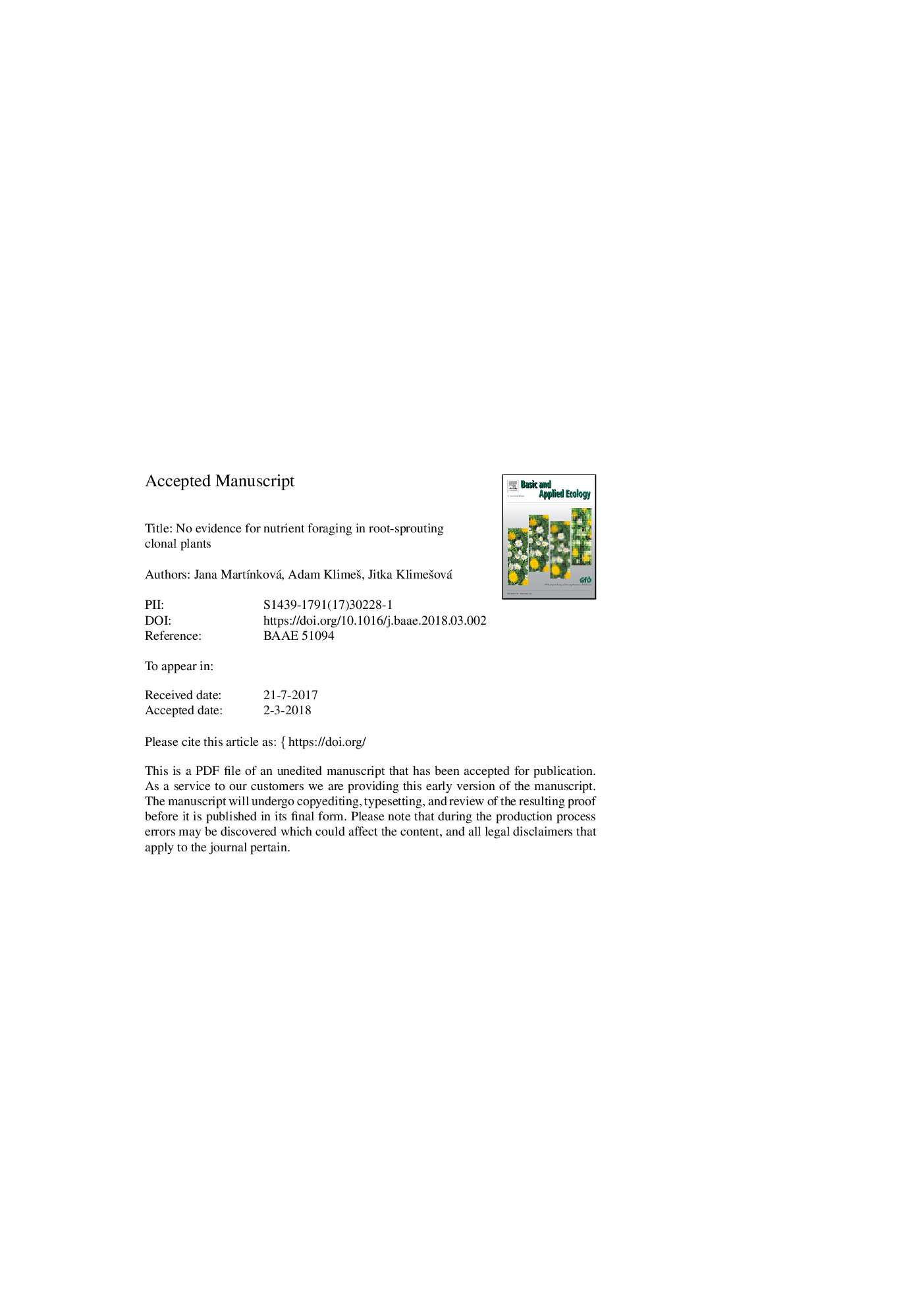| کد مقاله | کد نشریه | سال انتشار | مقاله انگلیسی | نسخه تمام متن |
|---|---|---|---|---|
| 8847008 | 1617853 | 2018 | 27 صفحه PDF | دانلود رایگان |
عنوان انگلیسی مقاله ISI
No evidence for nutrient foraging in root-sprouting clonal plants
ترجمه فارسی عنوان
هیچ مدرکی برای تغذیه مواد مغذی در گیاهان کلونالی کاشت ریشه وجود ندارد
دانلود مقاله + سفارش ترجمه
دانلود مقاله ISI انگلیسی
رایگان برای ایرانیان
کلمات کلیدی
موضوعات مرتبط
علوم زیستی و بیوفناوری
علوم کشاورزی و بیولوژیک
علوم دامی و جانورشناسی
چکیده انگلیسی
Clonality is defined as vegetative reproduction via the production of ramets, which are, at least initially, connected by spacers. In general, there are three types of spacers of two origins. Whereas stolons are aboveground spacers, rhizomes are belowground spacers; however, both of stem origin. The third type of spacers are roots in root-sprouting plants. The possibility of foraging in clonal plants has attracted broad interest among ecologists but has been experimentally documented only for stoloniferous clonal plants foraging for light. Foraging for belowground resources has yet to be demonstrated, perhaps because tests of foraging have focused on clonal plants that spread laterally via stolons or rhizomes, i.e. stem organs. Lateral spread based on sprouting roots has not been considered even though, in addition to functioning as conduits between ramets, root spacers are able to sense and take up nutrients. We therefore hypothesized that root-sprouting clonal plants may be able to directly react to environmental heterogeneity and exhibit nutrient foraging. To test this hypothesis, we conducted two experiments with root-sprouters in nutrient-heterogeneous and -homogeneous environments. We found that plants produced more biomass when growing in a heterogeneous environment than in a homogeneous environment and that root biomass was greater in the nutrient-rich patches than in nutrient-poor patches. However, the number of ramets did not differ between patches in the heterogeneous environment. We conclude that plants whose clonality is based on roots, similarly as plants whose clonality is based on stolons or rhizomes, do not exhibit accumulation of ramets in nutrient-rich patches. Foraging at the organ level, i.e. by roots, seems to be more probable in this clonal group. To analyse how clonal plants with different clonal strategies perceive and react to environmental heterogeneity, researchers must account for the high variability in clonal growth forms and in scales of environmental heterogeneity.
ناشر
Database: Elsevier - ScienceDirect (ساینس دایرکت)
Journal: Basic and Applied Ecology - Volume 28, May 2018, Pages 27-36
Journal: Basic and Applied Ecology - Volume 28, May 2018, Pages 27-36
نویسندگان
Jana MartÃnková, Adam KlimeÅ¡, Jitka KlimeÅ¡ová,
